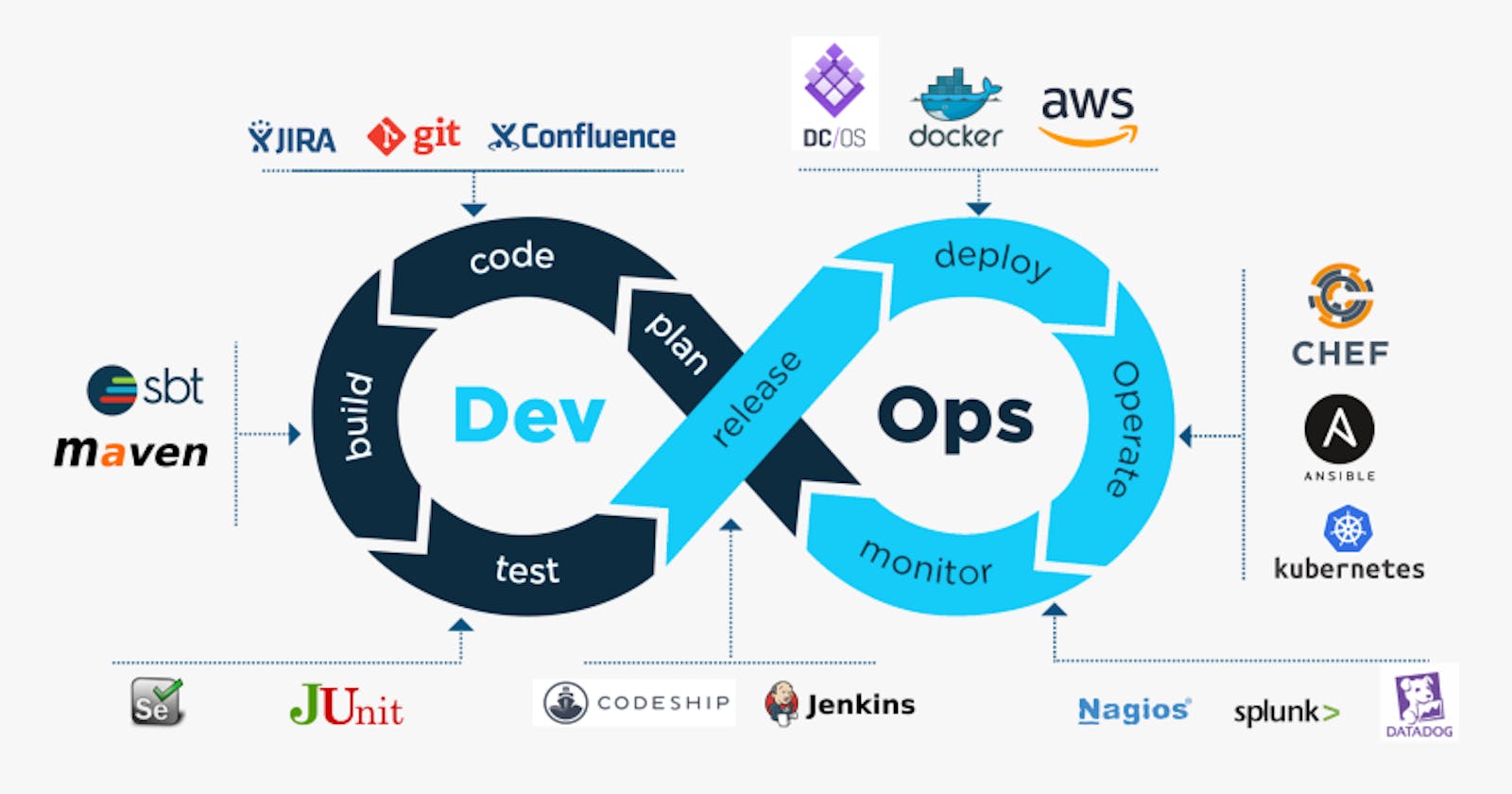What are Microservices and why you should use them?
Microservices: The Key to Scalability and High-Performance
Table of contents
- Do you know what’s common to Amazon, Netflix, and NASA?
- What are the Microservices?
- How Microservices came into the picture?
- What is Microservices Architecture?
- Monolith V/S Microservice. Which one should you choose?
- How can Microservices Work with DevOps?
- How did Netflix become so good at DevOps by not prioritizing it?
- How does Spotify use DevOps to improve developer productivity?
Do you know what’s common to Amazon, Netflix, and NASA?
--> All three of them use DevOps.
- Amazon uses it to deploy new software to production at an average of every 11.6 seconds!
- Netflix uses it to deploy web images into its web-based platform. They have even automated monitoring wherein they ensure that in the event of a failure in implementing the images, the new images are rolled back, and the traffic is rerouted to the old version.
- NASA on the other hand, used it to analyze data collected from the Mars Rover Curiosity.
It’s become such that every organization that focuses on quick deployments of software and faster go-to-market uses DevOps.
Statista reveals that 17% of enterprises had fully embraced DevOps in 2018 as compared to 10% in 2017.
Given the advantages, these numbers will only grow every year as companies transition from the waterfall approaches to develop fast, fail quickly, and move ahead on the principles of the agile approach.
But for DevOps to deliver to its fullest potential, companies need to move from the monolithic architecture of application development to microservices architecture.
What are the Microservices?
As I mentioned in the title, Microservices is not a specific Framework or Technology. It is a concept or "IDEA" that divides A complete application into smaller services. which allows delivery teams to focus on individual services as separate entities.
How Microservices came into the picture?
Microservices are typically built around a specific business domain and expose a well-defined interface that can be invoked by other services. This loose coupling of services allows for each microservice to be developed, deployed, and scaled independently of the others.
The microservices approach has gained popularity in recent years due in part to the rise of containerization technologies like Docker. Containers allow for the packaging of an application and all of its dependencies into a single unit that can be easily deployed and scaled. This has made it much easier to deploy and manage microservices-based applications.
Netflix was one of the earliest adopters of microservices architecture. This allowed them to move quickly and scale their business efficiently. Microservices allowed them to break their monolithic application into smaller, more manageable pieces. This made it easier to develop and deploy new features. It also made it easier to scale individual services as needed. Netflix has been able to use microservices to quickly innovate and release new features to their customers. Now companies like Amazon, Walmart, Twitter, Spotify, etc. are using a microservices architecture.
What is Microservices Architecture?
Unlike monolithic architecture, where the entire application is developed as a single unit, Microservices structures applications as a collection of services. It enables the team to build and deliver large, complex applications within a short duration.
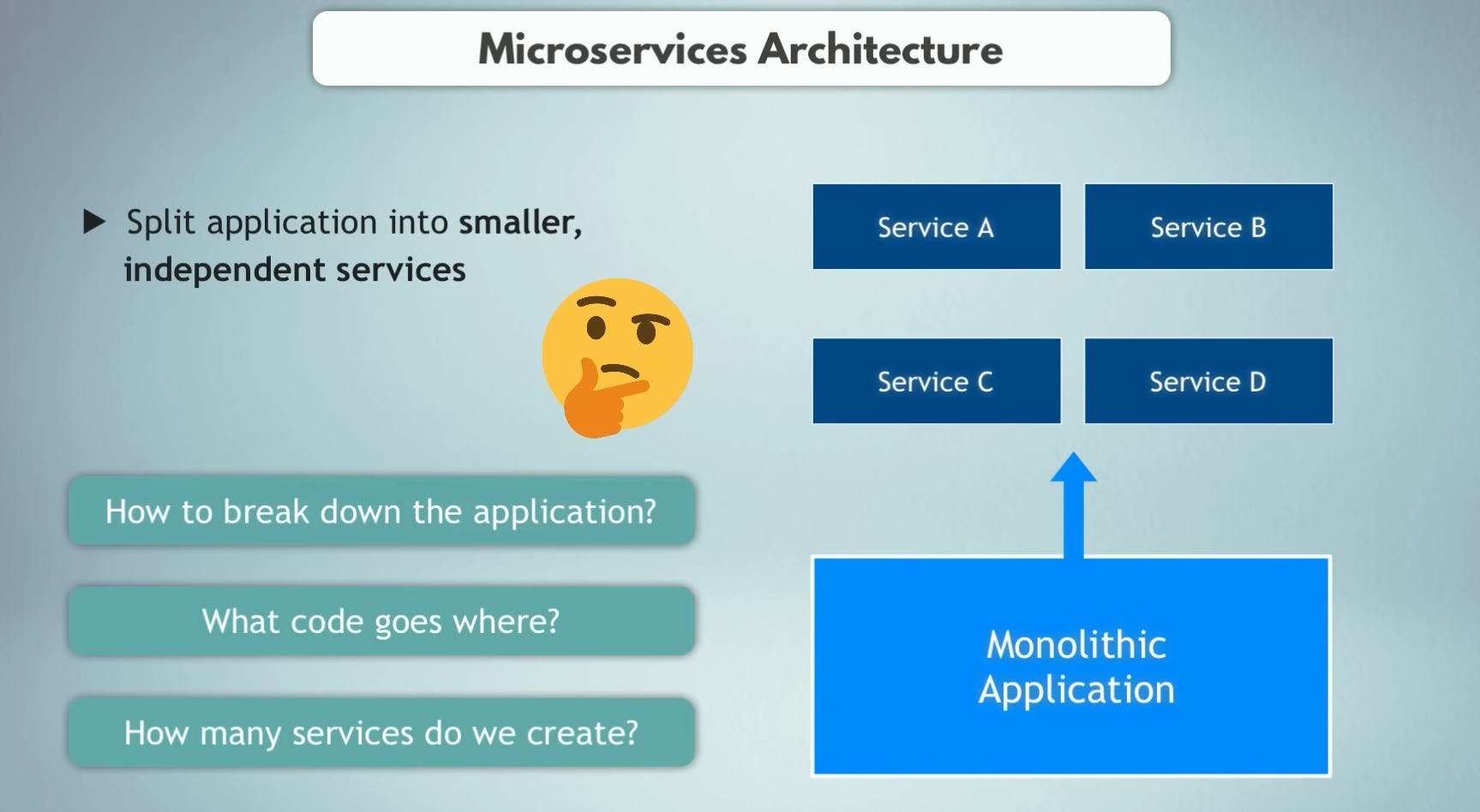
Main fundamental behind Microservices is to break down application based on business functionalities and Develop, Deploy & Scale separately. Which is called "Loose Coupling".
This means if you want to work on single part of project ( components ) you can develop , deploy it separately and it have different version based on updates.
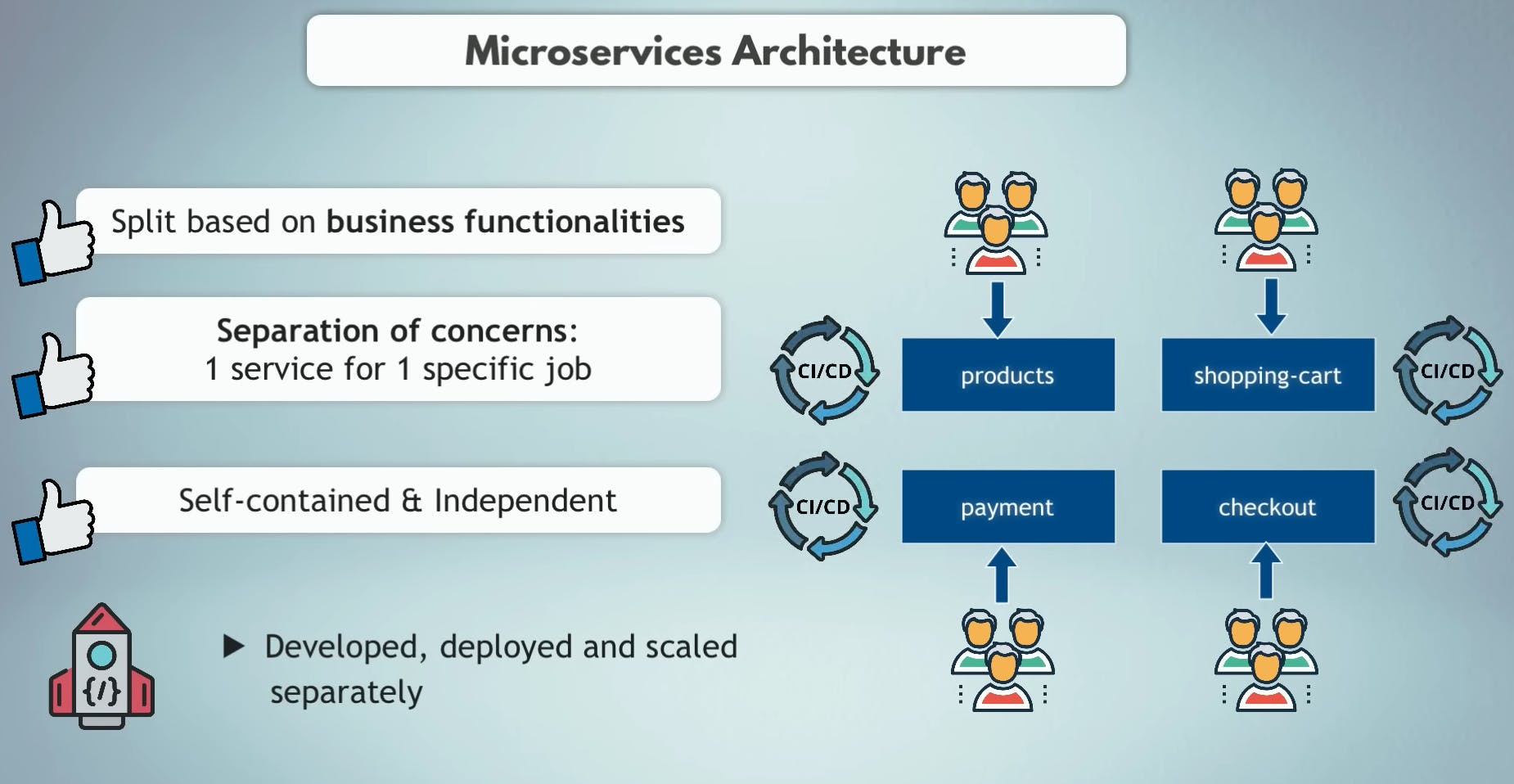
Communication between Microservices
Now if services are isolated and self-contained how do they connect to each other ? because obviously one components need some kind of information or connection to other components !
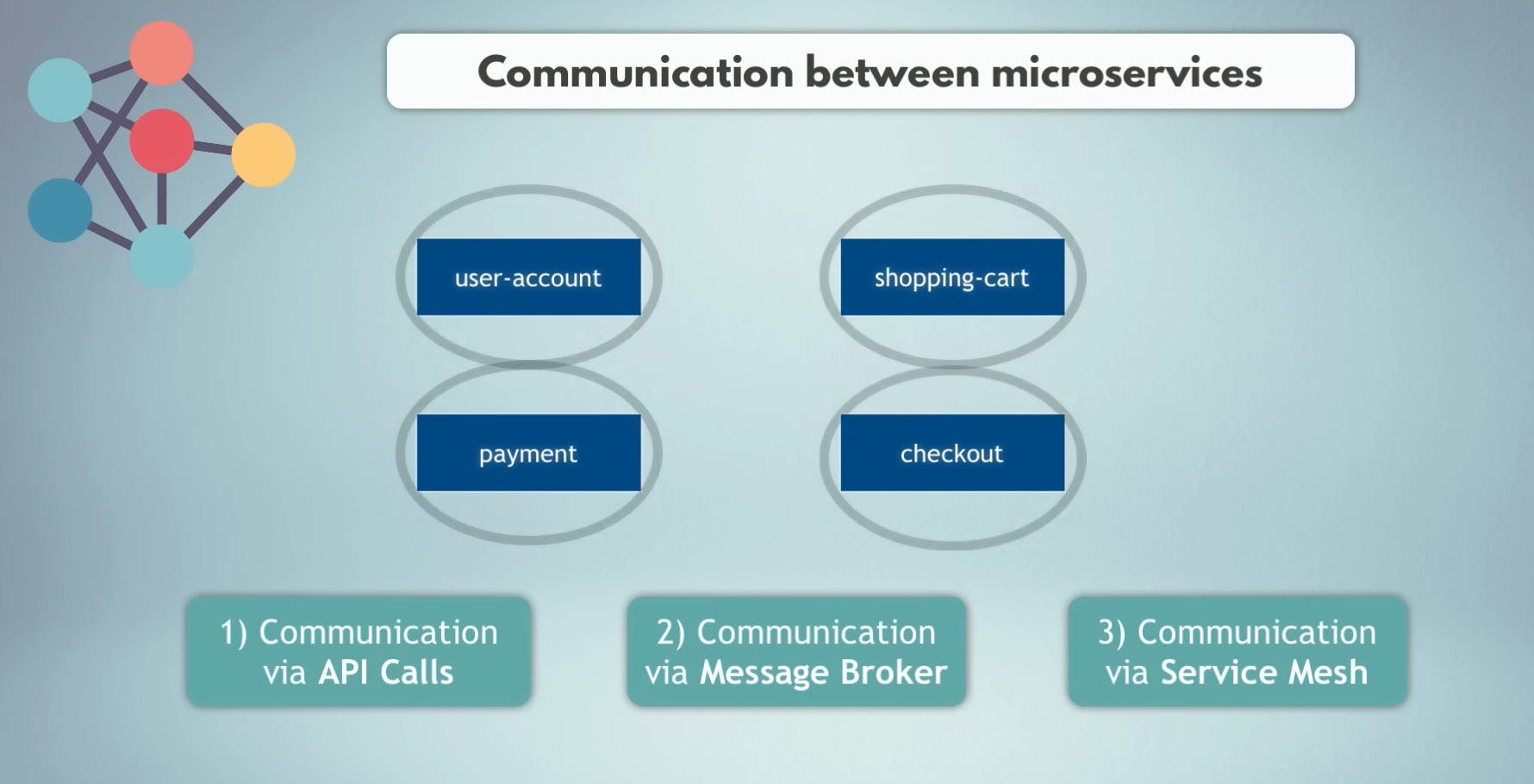
(1) Communication via API calls

--> A very common way for microservices communication is using API calls --> They can talk to each other , by sending requests to the respective API endpoints. This is synchronous communication.
(2) Communication via Message Broker

--> Here services send messages to first intermediate Broker ( Rabbit MQ ) & then broker will forward their message to the next services.
(3) Communication via Service Mesh

--> This communication method is very popular especially in the field of Kubernetes is using a service mesh. With service mesh you have kind of helper service which takes over the complete communication logic so you don't have to code this logic into the microservices.

your team can choose it's own stack & develop service independently. This is the most important advantage of microservices architecture compare to monolith.
Monolith V/S Microservice. Which one should you choose?
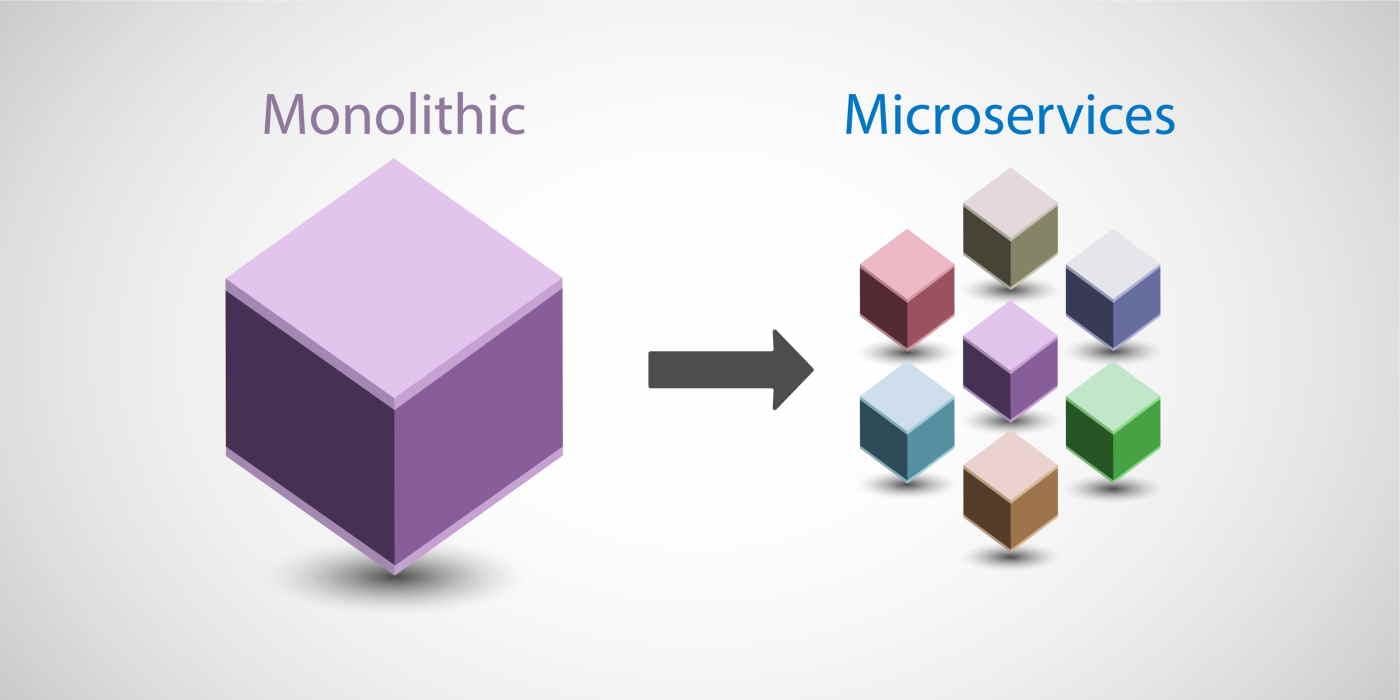
Regarding technology, there are always two schools of thought – those who prefer the tried and tested monolith approach and those who are all aboard the microservices train. So, which one should you choose?
There is no easy answer, as it depends on your specific needs and preferences. However, monoliths generally are better suited for smaller applications with simpler architectures, while microservices are more appropriate for larger, more complex apps.

Here's a quick overview of the pros and cons of each approach :
Monoliths
Simple to develop and deploy
Easy to test and debug
All features are bundled together, so they can be released and updated simultaneously
Not as scalable as microservices
Can be difficult to maintain as the codebase grows larger
Changes to one feature can potentially break other features
Lack of flexibility - all features are tightly coupled.
Problematic with applying new technology stack to a specific feature
Microservices
More scalable than monoliths
Easy to update and deploy individual services
Services can be written in different languages, allowing for more flexibility
Independent development and release cycles
Easier to maintain as the codebase grows
Can be more resistant to changes, as each service is isolated
Simple routing can direct traffic to the appropriate service
Can be more complex to set up and manage
Requires more communication between teams
Can be more difficult to debug, as errors can span multiple services
Final Verdict
So, what's the verdict? In my opinion, microservices are the way to go for most applications. The benefits outweigh the drawbacks, and when done right, microservices architecture can result in a more scalable, flexible, and maintainable application. Of course, there is no silver bullet, and microservices are not appropriate for every situation. But microservices are worth considering if you're looking to build a large, complex application.
How can Microservices Work with DevOps?
Microservices architecture enables organizations to adopt a decentralized approach to building software. This allows the developers to break the software development process into small, independent pieces that can be managed easily. These developed pieces can communicate with each other and work seamlessly. The best part about microservices architecture is it allows you to trace bugs easily and debug them without leading to redeveloping the entire software. This is also great from the customer experience perspective as they can still use the software without any significant downtime or disruption. It’s a perfect fit for organizations that use DevOps to deploy software products.
No wonder organizations like Netflix, Amazon, and Twitter that were using a monolithic architecture have transitioned towards a microservices architecture.
Let’s look at the benefits of Combining DevOps with Microservice Architecture :-
- Continuous Deployment : Remember the Netflix example we gave at the beginning about how Netflix reroutes the traffic to the old version of web images if they are not deployed on time? Imagine if Netflix still used monolithic architecture or the waterfall method of software deployment, do you think they would have been able to give the same kind of customer experience you witness today? Most likely, not! Microservices architecture coupled with DevOps enables continuous delivery and deployment of software, which means more software releases and better quality codes.
- More innovations and More Motivation : Imagine working on a product for 2-3 years and then knowing it is not acceptable to the market! It becomes hard to pivot too. Often you realize that there are several bugs, the process has become unnecessarily lengthy, and you have no clue which team is working on what. Wouldn’t it lower your morale? However, those days have gone. Today, organizations have transitioned from a project to a product approach. There are smaller decentralized teams of 5-7 people that have their own set of KPIs and success metrics to achieve. This allows them to take ownership of “their” product and it gives them better clarity on the progress. It also gives them the freedom to innovate, which boosts their morale.
- High-quality Products : With the power of continuous deployment and the freedom to experiment and innovate, organizations can continuously make incremental changes to the code leading to better quality products. It allows teams to mitigate risks by plugging the security loopholes, make changes to the product based on customer feedback, and reduce downtimes.
As you can see, using DevOps and microservices architecture together will not only boost the productivity of the team, but it will also enable them to develop a more innovative and better quality product at a faster pace. It helps product teams develop products in a granular manner rather than taking a “do it all at once” approach.
However, to embrace DevOps and microservices, you have to ensure that your teams understand the core benefits and make the most of the change.
Teams usually work in silos – the development team works independently, the testing team does its job, and so on. There is an obvious gap in communication, which leads to a delay in completing development and testing. DevOps and microservices require teams to work in tight collaboration. You will have to foster an environment where there are cross-functional teams of testers and developers communicating and working together to complete a task. This will help the teams to accelerate the process of developing, testing, and deploying their piece of work at a faster pace.
Of course, it is not easy to introduce a culture of collaboration, given that people are accustomed to working in silos. Hence, it is essential to reduce friction before starting the initiative. Once everyone shares in the vision and understands their own role in getting there, developing products with DevOps while leveraging a microservices architecture will become much easier.
How did Netflix become so good at DevOps by not prioritizing it?

Isn't it bizarre that Netflix became good at DevOps by not prioritizing it? It's like saying that Michael Jordan became a great basketball player by not shooting hoops. But that's the truth.
Netflix has been around for a while but has only become a household name in the last few years. And a big part of that is due to their embrace of DevOps. So how did they do it? How did Netflix become so good at DevOps by not making it a priority? Let's take a look.
1) They give production access to the engineers and let them solve any problem in the way they think it's best:
Giving people the power to solve problems in the way they think is best is a core principle of DevOps. By giving engineers production access and letting them solve problems without going through layers of bureaucracy, Netflix has been able to move quickly and efficiently. This culture of trust and responsibility has helped them avoid many common issues plaguing other organizations.
2) They didn't prioritize uptime, rather focused on innovation:
Regarding DevOps, uptime is often seen as the most important metric. However, Netflix takes a different approach. Rather than focusing on uptime, they focus on innovation. It allows them to experiment and iterate quickly, which has been essential to their success.
3) Not enforcing the use of specific frameworks or programming languages
Flexibility is key for any organization, but it is especially important in DevOps. That allows their teams to use the tools they are most comfortable with, which will be the most effective for each project. Netflix doesn't enforce the use of specific frameworks or programming languages.
4) They focused on data for decision making
In DevOps, it is important to make decisions based on data rather than opinions. Netflix has taken this to heart and has made data-driven decision-making a core part of its culture. Netflix lets algorithms take care of analyzing data and notify them if something is wrong. Again this helps engineers to focus on the product.
Even with all these different approaches right from the get-go, it's likely that following Netflix blindly would still lead to some issues. This trade-off focusing on product rather than uptime might work for them, but other companies might not have the same success. That is why they are also considered an exception.
Nevertheless, their success case is still valuable to learn from. It's good to know that breaking norms can be done right – as long as it's done with caution, consideration, and a lot of data backing up the decision.
How does Spotify use DevOps to improve developer productivity?

I'm sure you've all heard of Spotify- the music streaming service that has taken the world by storm. You may not know that Spotify is also a prime example of how effective DevOps can be in improving developer productivity.
Spotify achieved massive growth quickly due partly to its use of DevOps principles. But how did they do it?
How does Spotify use DevOps to improve developer productivity? Well, here's a little insight :
1) Spotify placed a strong emphasis on automation.
They used various automation tools to help manage their large user base and keep things running smoothly. Spotify automated the whole process of building data pipelines, backend services, and websites. That helped free their developers to focus on new features and improvements rather than fire-fighting issues.
2) They use the DevOps tool to experiment quickly and safely.
Spotify has a high-speed release cycle. They use various DevOps tools to help them experiment quickly and safely. These tools help them to automatically roll back changes if something goes wrong. Their developers can try out new features quickly and easily without worrying about breaking things.
3) They automated the project setup process by developing tools such as a test-certification program, Tingle CI/CD, Golden path, and Backstage.
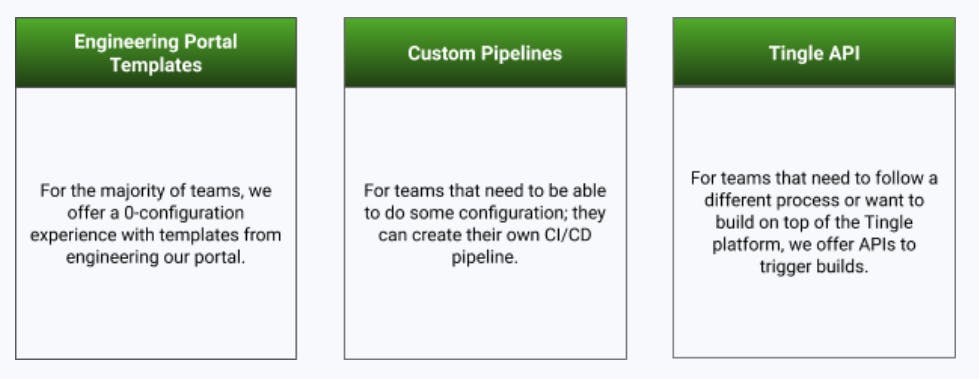
With the help of these tools, they achieved the following:
- Increased developer productivity by automating the project setup process
- Improved quality of their codebase by implementing a strict test-certification program
- Reduced cycle time from idea to production by using CI/CD pipelines To explain more, the Golden Path tool helps reduce the decision-making required to build backend services, application features, data products etc.
Backstage allows engineers to spend less than 5 minutes setting up Skeleton for a new website, which used to take more than 14 days.
The CI/CD system developed by Spotify called Tingle automatically builds the project when the engineer commits it to GitHub and automatically runs all the tests. This reduced the cycle time from idea to production by more than 50%.
Under the test certification program, any code that matches the certification criteria automatically gets the badge "Tested & Certified".
It is incredible how Spotify has achieved continuous deployment and a short cycle time. They have adopted various techniques like using CI/CD tools, writing tests and following review processes. With the use of DevOps, they have been able to bridge the gap between the software development and operations team, which has helped them achieve their goal of faster time to market.
What's your take on this? Let me know in the comments below.
